I'm not very good at giving tips, as I'm not really very technically-minded and find it quite hard to express what I've done in simple phrases. I really like what you have done with the flesh, it works well (and nipples! I always forget to do nipples as no one ever seems to sculpt them on the lads, it is an odd blind-spot really).
The only way I have discovered to get clean lines is practice, practice, practice, and a determination to correct it every time you fuck it up (which sadly, is still a lot of the time with me). I'm rubbish at staying inside the lines (never was much of a one for colouring-in as a kid), so frequently I'll make a mistake, then go too far the other way when correcting that mistake, and end up having to correct the correction. This continues until I get it right or throw the figure across the room in frustration.
I do fur the way I do most things. Start quite dark and do several layers of highlights. There's no secret to it, and I don't really know any shortcuts that work for me. It's all done in a painstaking slow way. I have never managed to get good results with dry-brushing or "the dip" (or other similar methods). Those are skills I haven't been able to master so I do it the slow old-fashioned way. For patterned animal pelts I find that if you have a colour transition under the spots it really makes the whole thing look more real. Most spotted cats aren't a uniform colour under the spots, they usually are darker in the centre and get progressively lighter towards the extremities and underside. Hinting at this when doing loincloths and such can really bring them to life. I find using a wash of an orangy brown colour on the inner/upper part of such pieces helps no end with this, as well as going very light towards the edges.
This is the kind of thing I mean, on the straggly bits of spotted cat skins dangling from these guys...
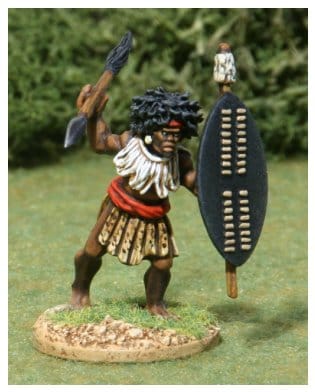
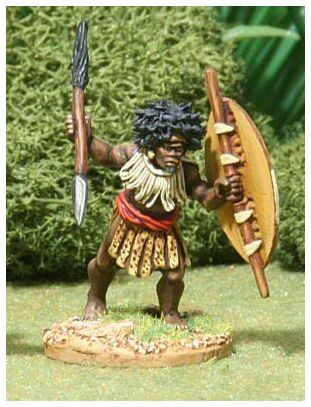
It's really easy to do, but that little bit of extra effort makes a fair bit of difference in bringing the figure to life. For some reason I have found dark brown looks better than black spots, even when the spots on the real cat are black. Brown just looks better on a model.
You can do a similar thing on the loincloths, which were often made from wildcat skins in the case of the Ngoni...
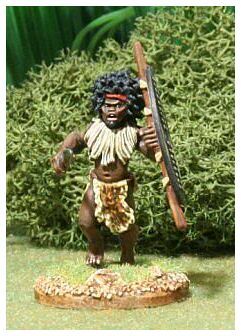
Though it is a little harder to get the effect to show when the fur is sculpted thickly like this. The markings on some of these pelts seem to have been multiple short stripes in rows, but spots would do just as well.
The Ngoni were (like most East Africans) fond of red cloth almost to the point of obsession. So if like Jeff965 you find all these browns and blacks a bit monotonous, you can liven things up no end with liberal amounts of bright red. Anything that looks like it could be made from tradecloth can be painted this way, from headbands to those waist-wrap things, and also the dangly strips...
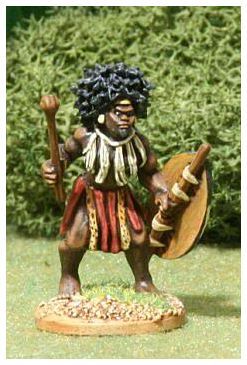
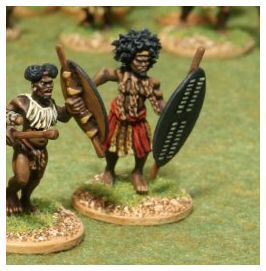
Hope that gives you a few ideas. Look forward to seeing more of your guys soon.
As for "Plynkes" - years ago on the Miniatures Page my handle was "Polynikes" (taken from the name of a character in a novel about Spartans that I had enjoyed). One day a fellow poster, in some kind of langour of text-speak laziness, referred to me in an odd shortened version - Plynkes. I actually preferred it, and have used it ever since.
